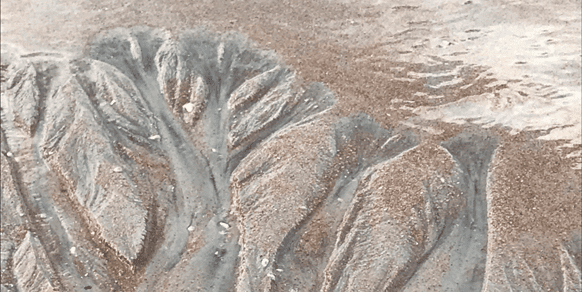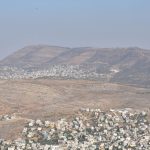[Originally published as Reverse Engineering the Grand Canyon]
When looking at the Grand Canyon and wondering about its formation, it is not readily clear that the erosion was actually just the last step of a multi-step process. By using reverse engineering, that is, by going back to the original state and then adding each consequential step, it becomes clear that water played a major role throughout the formation of the Grand Canyon.
Step 1. Remove all sedimentary layers and reverse all faults. Whatever the surface once looked like, it was somehow eroded smooth like a rock in a tumbler. Much of the granite bedrock was pulverized into grains of sand.
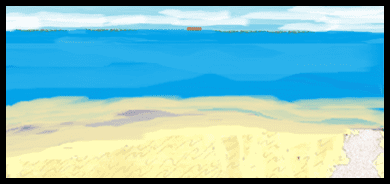
The global Flood offers the best explanation. If the subterranean reservoirs are what the Bible refers to as the fountains of the deep, then in one day, God caused them all to erupt as the Flood began. Whether the rushing water was subterranean or mighty waves from the disrupted oceans that God burst open, they nevertheless pulverized earth’s landmass into sand, clay, and silt.
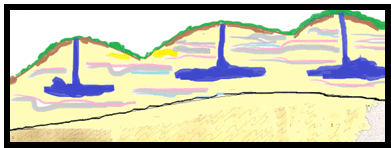 Although the pre-flood world was totally destroyed, some details can be inferred from God’s Word. Gold and other metals were available (Genesis 2:11–12). Large rivers and mist watered the land (Genesis 2:6,10). There must have been subterranean reservoirs of water fueling the rivers which then flowed downhill.
Although the pre-flood world was totally destroyed, some details can be inferred from God’s Word. Gold and other metals were available (Genesis 2:11–12). Large rivers and mist watered the land (Genesis 2:6,10). There must have been subterranean reservoirs of water fueling the rivers which then flowed downhill.
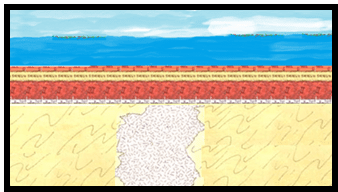 Step 2. Once the floodwaters could no longer carry the load of sand, the sediment was deposited in vast layers. Dissolved silica then cemented the sand grains into quartzite. The preserved ripple marks in this rock show how quickly these layers were laid down as the grains were carried along by globe-circling currents. Among the creatures living and being fossilized during this process were trilobites, crabs, crinoids, corals, and other invertebrate sea creatures.
Step 2. Once the floodwaters could no longer carry the load of sand, the sediment was deposited in vast layers. Dissolved silica then cemented the sand grains into quartzite. The preserved ripple marks in this rock show how quickly these layers were laid down as the grains were carried along by globe-circling currents. Among the creatures living and being fossilized during this process were trilobites, crabs, crinoids, corals, and other invertebrate sea creatures.
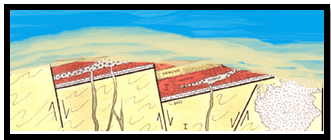 Step 3. As earth’s remaining foundations broke up, the faulting of the granite left the surface rocks jagged. The currents once again ground the rock smooth. In many places, not only was all the previously laid sediment washed away to be laid again elsewhere, but more of the granite bedrock was also pulverized into sand.
Step 3. As earth’s remaining foundations broke up, the faulting of the granite left the surface rocks jagged. The currents once again ground the rock smooth. In many places, not only was all the previously laid sediment washed away to be laid again elsewhere, but more of the granite bedrock was also pulverized into sand.
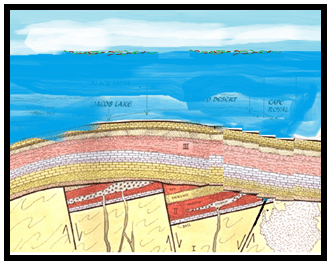 Step 4. The newly made sediment was again laid in layers beneath the flood waters. These layers entombed many of the sea creatures and the bones of dinosaurs that had sunk to the sea floor.
Step 4. The newly made sediment was again laid in layers beneath the flood waters. These layers entombed many of the sea creatures and the bones of dinosaurs that had sunk to the sea floor.
Step 5. As God raised the mountains, the sediment rushed off in great mudslides, creating more layers. The mountain chains then helped to hold the sediment in place and channelized the currents.
 Step 6. God raised the continents and lowered the sea floor. As the water rushed off the land, it carved canyons through the sedimentary layers. As the water level slowly lowered, benches were carved at each new level, just as rings are left on a bathtub if the water slowly drains.
Step 6. God raised the continents and lowered the sea floor. As the water rushed off the land, it carved canyons through the sedimentary layers. As the water level slowly lowered, benches were carved at each new level, just as rings are left on a bathtub if the water slowly drains.
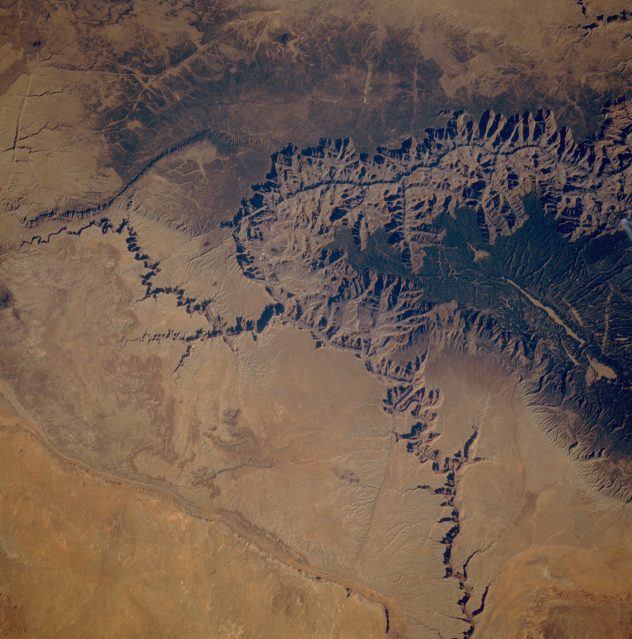
By switching to an aerial view, the vast amount of erosion is more evident. All the side canyons seem to show that the area was covered by deep water which was draining into the canyon as well as through the canyon. This is somewhat comparable to the erosion patterns left on a beach as water drains back into the ocean:




